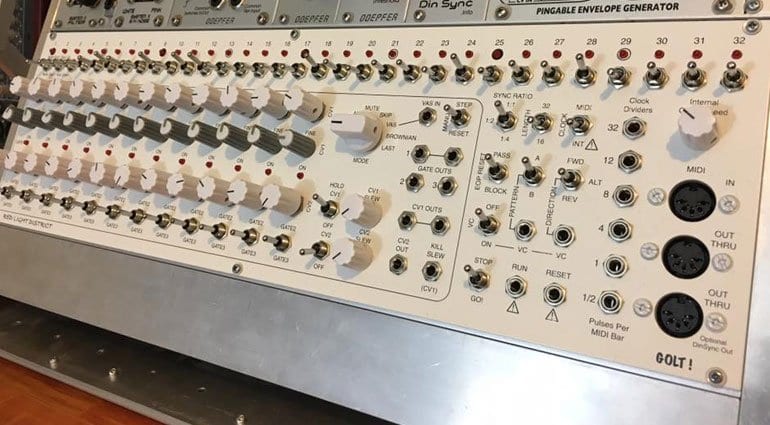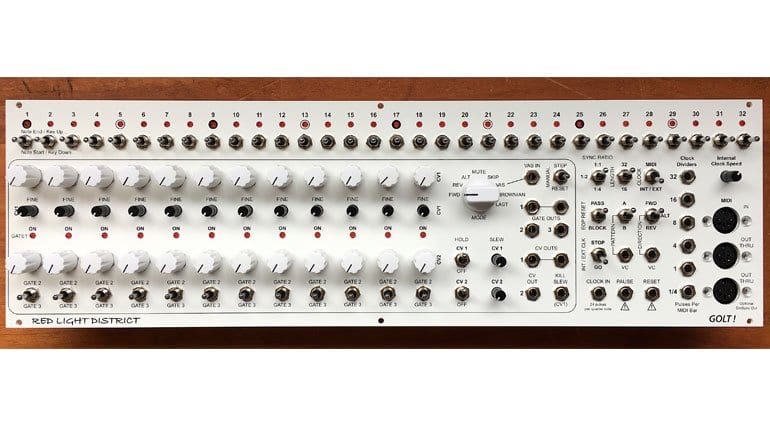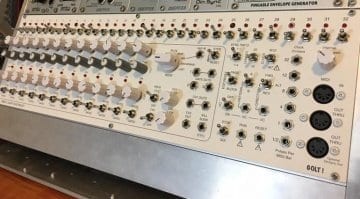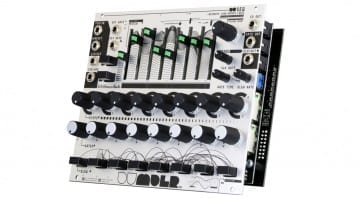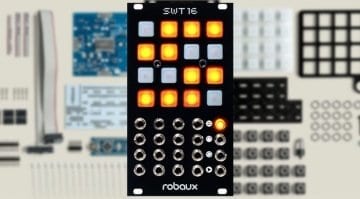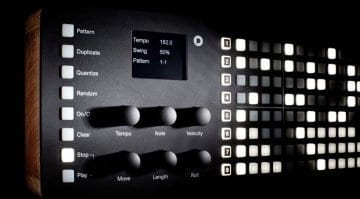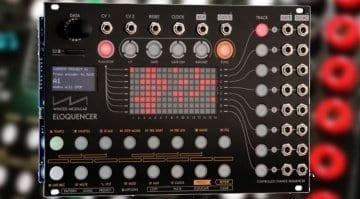Red Light District (RLD) Eurorack sequencer
GOLT! has announced the launch of the wide 84hp Red Light District (RLD) Eurorack sequencer. I’m assuming the name has something to do with the number of red LEDs rather than some sort of sex industry tie-in. It has a 32 step gate sequencer interwoven with a dual 12 step CV sequencer with comprehensive timing, options and utilities.
Red Light District
I’ve not found the RLD immediately penetrable. Maybe my inexperience is finding me slightly impotent (ok, bored of the inevitable innuendo now). But with a bit of thought and a conversation with RLD developer Stuart Allan on Facebook I think I might have got the hang of things.
Here’s the gist: 32 steps run along the top. Switch on a step on and it fires the first note of the 12 note CV sequencer. Switch on another and it fires the next note and so on up to 12 notes. This is very much in an x0x-style format where you program steps and rests rather than just having a sequence run. Why not 16 or 32 notes I hear you ask? Well, Stuart suggests that he never seems to use more than 12 notes in a bar, and his original prototype with 16 steps was simply too big and largely unnecessary. If you enable all 32 steps then the 12 notes will simply repeat slightly out of sync until 3 bars later when they match up again. I think you just have to get over this slight disparity and move along.
The 32 steps can be split into two patterns of 16 steps giving an interesting variation across the 12 notes. The two rows of 12 notes trigger at the same time. The first row is designed for notes, with coarse and fine tuning. The second row is designed more for modulation, running a filter or some other process.
Different to traditional sequencing?
The main difference with the RLD compared to traditional analogue sequencers is the ability to create time quantised spaces in between the gates, as well as the gates themselves. Each gate essentially has it’s own note on and note off rather than gates just tumbling into each other. This allows for full ADSR envelope control over each note.
Special features include time quantised muting, clock dividers that synchronise to MIDI, internal clock, or external clock. All functions can be changed while the sequence is running, including note insertion that doesn’t change the sequence length (because the pattern length is sync’d to 4/4 MIDI). Both onboard sequencers have comprehensive direction control, including a Brownian Random and Voltage Addressed Stepping on the 12 step sequencer. Both CV’s can also be used as a rudimentary Attack/Release generators; with global slew, peak-height and width, adjustable per step.
At 84hp it will eat up a row of your Eurorack. Stuart says many people buy a skiff just to put it in and actually I think it would be a good idea to provide it as a standalone product, or at least have an option with it skiffed up ready to go.
A Bare Bones Kit with front panel and PCBs will cost $319 AUD. A Partial Kit which adds all the front panel controls and connectors (but not electronic components) will cost $539 AUD. Or a fully built version is available for $895 AUD.
More information
- GOLT! RLD webpage.
Video
From an earlier prototype. Hopefully, newer videos will appear soon!
You are currently viewing a placeholder content from YouTube. To access the actual content, click the button below. Please note that doing so will share data with third-party providers.

